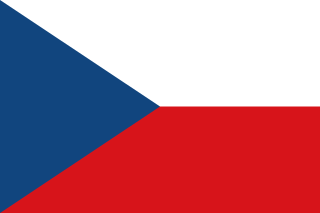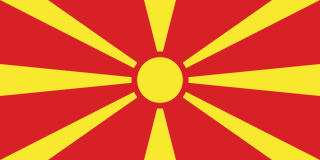
Czechoslovakia was a landlocked state in Central Europe, created in 1918, when it declared its independence from Austria-Hungary. In 1938, after the Munich Agreement, the Sudetenland became part of Nazi Germany, while the country lost further territories to Hungary and Poland. Between 1939 and 1945, the state ceased to exist, as Slovakia proclaimed its independence and the remaining territories in the east became part of Hungary, while in the remainder of the Czech Lands, the German Protectorate of Bohemia and Moravia was proclaimed. In 1939, after the outbreak of World War II, former Czechoslovak President Edvard Beneš formed a government-in-exile and sought recognition from the Allies.

The Sudetenland is the historical German name for the northern, southern, and western areas of former Czechoslovakia which were inhabited primarily by Sudeten Germans. These German speakers had predominated in the border districts of Bohemia, Moravia, and Czech Silesia since the Middle Ages. Since the 9th century the Sudetenland had been an integral part of the Czech state both geographically and politically.

Demographic features of the population of the Czech Republic include population density, ethnicity, education level, health of the populace, economic status, and religious affiliations.
The First Czechoslovak Republic emerged from the collapse of the Austro-Hungarian Empire in October 1918. The new state consisted mostly of territories inhabited by Czechs and Slovaks, but also included areas containing majority populations of other nationalities, particularly Germans (22.95 %), who accounted for more citizens than the state's second state nation of the Slovaks, Hungarians (5.47 %) and Ruthenians (3.39 %). The new state comprised the total of Bohemia whose borders did not coincide with the language border between German and Czech. Despite initially developing effective representative institutions alongside a successful economy, the deteriorating international economic situation in the 1930s gave rise to growing ethnic tensions. The dispute between the Czech and German populations, fanned by the rise of Nazism in neighbouring Germany, resulted in the loss of territory under the terms of the Munich Agreement and subsequent events in the autumn of 1938, bringing about the end of the First Republic.
The German-speaking population in the interwar Czechoslovak Republic, 23.6% of the population at the 1921 census, usually refers to the Sudeten Germans, although there were other German ethno-linguistic enclaves elsewhere in Czechoslovakia inhabited by Carpathian Germans, and among the German-speaking urban dwellers there were ethnic Germans and/or Austrians as well as German-speaking Jews. 14% of the Czechoslovak Jews considered themselves Germans in the 1921 census, but a much higher percentage declared German as their colloquial tongue during the last censuses under the Austro-Hungarian Empire.
Czechoslovakia had a peak population of 15.6 million, mainly composed of Czechs, Slovaks, Hungarians, Romani people, Silesians, Ruthenians, Ukrainians, Germans, Poles and Jews. The ethnic composition of Czechoslovakia changed overtime from Sudeten Germans being the most prominent ethnicity to Czechs and Slovaks making up two-thirds of the demographic. Amongst this demographic there was also a diverse range of religions with Roman Catholic being the most prominent. This population has been found to have had an increasing growth rate that had a declining trajectory. The population density was approximately 121 persons per square kilometre with the highest population density being in Moravia of 154 persons per square kilometre.

The Beneš decrees were a series of laws drafted by the Czechoslovak government-in-exile in the absence of the Czechoslovak parliament during the German occupation of Czechoslovakia in World War II. They were issued by President Edvard Beneš from 21 July 1940 to 27 October 1945 and retroactively ratified by the Interim National Assembly of Czechoslovakia on 6 March 1946.

German Bohemians, later known as Sudeten Germans, were ethnic Germans living in the Czech lands of the Bohemian Crown, which later became an integral part of Czechoslovakia. Before 1945, over three million German Bohemians constituted about 23% of the population of the whole country and about 29.5% of the population of Bohemia and Moravia. Ethnic Germans migrated into the Kingdom of Bohemia, an electoral territory of the Holy Roman Empire, from the 11th century, mostly in the border regions of what was later called the "Sudetenland", which was named after the Sudeten Mountains.
There are various communities of Germans in the Czech Republic. After the Czech Republic joined the European Union in the 2004 enlargement and was incorporated into the Schengen Area, migration between the two countries became relatively unrestricted. Both countries share a land border of 815 kilometers (506 mi).

Hungarians are the largest ethnic minority in Slovakia. According to the 2021 Slovak census, 456,154 people declared themselves Hungarian, while 462,175 stated that Hungarian was their mother tongue.
The Urums are several groups of Turkic-speaking Greek Orthodox people native to Crimea. The emergence and development of the Urum identity took place from 13th to the 17th centuries. bringing together the Hellenes along with Greek-speaking Crimean Goths, with other indigenous groups that had long inhabited the region, resulting in a gradual transformation of their collective identity.
The Greeks in Armenia, like the other groups of Caucasus Greeks such as the Greeks in Georgia, are mainly descendants of the Pontic Greeks, who originally lived along the shores of the Black Sea, in the uplands of the Pontic Alps, and other parts of northeastern Anatolia. In their original homelands these Greek communities are called Pontic Greeks and Eastern Anatolia Greeks respectively. Seafaring Ionian Greeks settled around the southern shores of the Black Sea starting around 800 BC, later expanding to coastal regions of modern Romania, Russia, Bulgaria and Ukraine. The Pontic Greeks lived for thousands of years almost isolated from the Greek peninsula, retaining elements of the Ancient Greek language and making Pontic Greek unintelligible to most other modern Hellenic languages. They were joined in the region by later waves of Greeks in the Hellenistic, Roman, and Byzantine period, ranging from traders, scholars, churchmen, mercenaries, or refugees from elsewhere in Anatolia or the southern Balkans.

The official language of Greece is Greek, spoken by 99% of the population. In addition, a number of non-official, minority languages and some Greek dialects are spoken as well. The most common foreign languages learned by Greeks are English, German, French and Italian.

The expulsion of Germans from Czechoslovakia after World War II was part of a series of evacuations and deportations of Germans from Central and Eastern Europe during and after World War II.

Ukrainian Greeks are a Greek minority that reside in or used to reside in the territory of modern Ukraine. The majority of Ukrainian Greeks live in Donetsk Oblast and are particularly concentrated around the city of Mariupol.
During and after the Greek Civil War of 1946–1949, members and or supporters of the defeated Communist forces fled Greece as political refugees. The collapse of the Democratic Army of Greece (DSE) and subsequent evacuation of the Communist Party of Greece (KKE) to Tashkent in 1949 led thousands of people to leave the country. It has been estimated that by 1949, over 100,000 people had left Greece for Yugoslavia and the Eastern Bloc, particularly the USSR and Czechoslovakia. These included tens of thousands of child refugees who had been forcefully evacuated by the KKE. The war wrought widespread devastation right across Greece and particularly in the regions of Macedonia and Epirus, causing many people to continue to leave the country even after it had ended.

The Greeks in Georgia, which in academic circles is often considered part of the broader, historic community of Pontic Greeks or—more specifically in this region—Caucasus Greeks, is estimated at between 15,000 and 20,000 people to 100,000 down from about 100,000 in 1989. The community has dwindled due to the large wave of repatriation to Greece as well as emigration to Russia, and in particular Stavropol Krai in the North Caucasus region of southern Russia. The community has established the Union of Greeks in Georgia and there is a Cultural Centre and a newspaper entitled Greek Diaspora.

Greeks have been present in what is now southern Russia from the 6th century BC; those settlers assimilated into the indigenous populations. The vast majority of contemporary Russia's Greek minority populations are descendants of Medieval Greek refugees, traders, and immigrants from the Byzantine Empire, the Ottoman Balkans, and Pontic Greeks from the Empire of Trebizond and Eastern Anatolia who settled mainly in southern Russia and the South Caucasus in several waves between the mid-15th century and the second Russo-Turkish War of 1828–29. As during the Genocide of the Pontic Greeks, the survivors fled to the Upper Pontus.

There is a small community of ethnic Macedonians in the Czech Republic. Among the refugees of the Greek Civil War who were admitted to Czechoslovakia in the late 1940s, roughly 4,000 were of Macedonian ethnicity; they resettled primarily in the Czech portion of the country. In commemoration of 75 years since the exodus of the child refugees to Czechoslovakia and Poland, an exhibition was held in Krnov in June 2023.
This article describes ethnic minorities in Czechoslovakia from 1918 until 1992.












